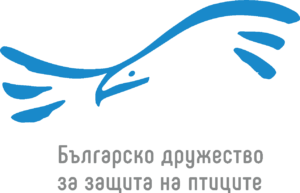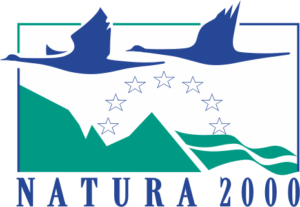Length of the body: 15–17 cm. Wingspan: 50 cm. Plumage is predominantly grey-brown on the topside of the body, and white on the lower side. Male birs has black streaks on the side of its neck, across the eye and the forehead. Feeds with insects, small clams and other invertebrates. Lives in a sandy and […]
Length of body: 15–18 cm. Wingspan: 32–35 cm. Black ring around the neck and throat. The forehead is white, with characteristic yellow ring around the eye and entirely black bill. Feeds with insects and other small invertebrates. Lives in gravel and sand banks of water bodies, incl. the sea coast and gravel pits. Nests on […]
Length of the body: 33–36 cm. Wingspan: 70 cm. It has long and red legs. Wings are black on the topside and on the lower side. The throat, breasts, belly, tail, waist and part of the back are white. Male birds have black spot on their heads and the neck; female birds are almost entirely […]
Length of the body: 42–46 cm. Wingspan: 67–77 cm. It has a characteristic upturned bill. The plumage is predominantly white. The head and the tip of the wings are black, there are horizontal black stripes on the back and on top of the wings. The legs are relatively long and pale blue. Feeds with small […]
Length of the body: 21–25. Wingspan: 41–47 The smallest tern. The plumage is white on the lower side and ash-grey on the topside; tips of the wings are black. The head is black with a white forehead. The bill is yellow with a black tip. Feeds with small fish. Lives in a salt, brackish and […]
Length of body: 37–43 cm. Wingspan: 85–97 cm. Plumage is white on the lower side and ash-grey on the topside. Tips of the wings are darker. The head and the neck are black with a characteristic mane. Feeds with fish. Lives in a salted and brackish lakes, salterns and the seacoast. Nests on the ground […]
Length of body: 34–37 cm. Wingspan: 70–80 cm The back and the upperwings are black. Waist, tail, belly, throat and cheeks are white. The crown and the neck are black and the bill is red. It feeds with insects, invertebrates and fish. Nests in colonies on the ground. It’s found in isolated areas on the […]
Други видове, които е вероятно да привлече островът, са дебелоклюна рибарка (Sterna nilotica), дългоклюна чайка (Chroicocephalus genei) и малка черноглава чайка (Ichthyaetus melanocephalus), но броят им вероятно ще е ограничен, тъй като са редки видове за България.
Белият ангъч (Tadorna tadorna) обитава основно езера и реки и гнезди в дупки на лисици. Очакваме гнездата по част от дейностите да бъдат заети от 5–10 двойки.
Изкуственият остров ще осигури зона за почивка за различни мигриращи и зимуващи видове, както и за някои от гнездящите птици в областта. Сред тях са: малък корморан (Phalacrocorax pygmeus), голям корморан (Phalacrocorax carbo), розов пеликан (Pelecanus onocrotalus) и къдроглав пеликан (Pelecanus crispus), който е приоритетен вид за програма LIFE. Вероятно, че повечето от птиците, преминаващи по време на миграция и зимуване, ще използват острова, тъй като в защитената зона няма други подходящи места за почивка.
Сред другите водоплаващи патици, които може да използват острова за зимуване и почивка са сива патица (Anas strepera), фиш (A. Penelope) и качулата потапница (Aythya fuligula). Подобрените условия и създаването на подводен субстрат от безгръбначни ще допринесе за опазването на два вида от консервационно значение – тръноопашата потапница (Oxyura leucocephala) и белоока потапница (Aythya nyroca). Очаква се островът да се използва за почивка при миграция и зимуване от видове като малък горски водобегач (Tringa glareola), малък червеноног водобегач (T. tetanus), черноопашат крайбрежен бекас (Limosa limosa), голям свирец (Numenius arquata), речна чайка (Larus ridibundus), чайка буревестница (L. canus), жълтокрака чайка (L. michachaelis) и каспийска чайка (L. chachinans). По време на миграция островът ще служи като подходящо място за почивка за различни видове рибарки (Chlidonias sp., Sterna sp.), а също и за чапли – голяма бяла чапла (Ardea alba), сива чапла (A. cinerea) и малка бяла чапла (Egretta garzetta).



